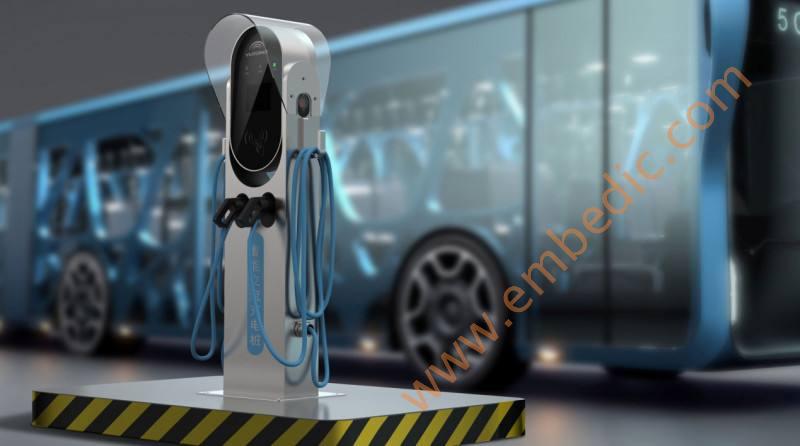
With the promotion of the new energy automobile industry and autonomous driving technology, the automotive semiconductor market is ushering in a golden period of development. According to data, for L1 to L5 level autonomous driving, the semiconductor cost of autonomous driving at L1 is only about 150 US dollars, to L3 level to 600 US dollars, rising to L4, L5 level, the semiconductor cost of the whole vehicle will be Reached 1200 USD. In this fast-growing market, storage products and technologies are not the focus of mainstream media. Feng Yixin, director of the product management department of Fujitsu Electronic Components (Shanghai) Co., Ltd., also said in a recent event: "With the deployment of new infrastructure, the popularization of charging piles will quickly promote the popularization of new energy vehicles, whether it is pile-side or car On the other hand, the future will give rise to more high-performance storage applications." As the main market provider of non-volatile memory FRAM.
The company is meeting the needs of the automotive market with the best performance and ushering in a sweet period of market growth. Fujitsu, which has mass-produced FRAM for 20 years and shipped more than 4.1 billion units, has successively launched a number of automotive-grade FRAM products that can operate in a high temperature environment up to 125°C since 2017. After only two years Marketing promotion has successfully penetrated into many Tier-1 and Tier-2 supply chains of automakers such as Dongfeng, King Long, Yutong, SAIC-GM-Wuling, BMW Brilliance, FAW, Yujie, JAC, Chery and other automakers.
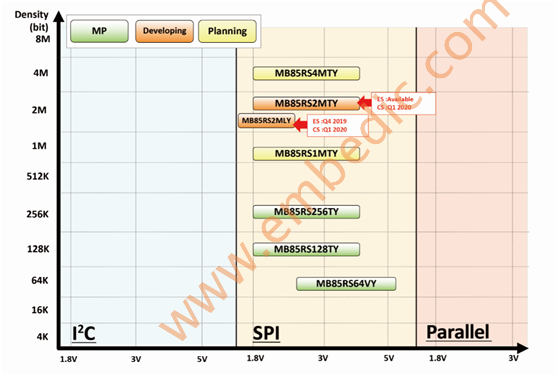
With the rise of concepts such as 5G and Internet of Vehicles, vehicle ADAS, in-vehicle entertainment and other functions are gradually becoming the standard equipment of a new generation of smart cars, and the on-board software and hardware systems empowered by multi-sensor fusion and large screens and multi-screen displays are undoubtedly Need to carry more on-board memory. At the same time, because these memories are distributed in various types of vehicle terminals and hardware systems as the core carriers of data content such as images, videos and even voices, their consumption and data storage characteristics are often very different-or data are often erased and written. , Or need a longer cycle life, or need ultra-high reliability, and so on. Therefore, in order to successfully enter the vehicle storage market, there is almost no complete solution, and the market segments with unique performance that meet the storage needs of specific application scenarios have attracted attention.
Take the VCU (Complete Vehicle Control Unit), one of the most core technologies in new energy vehicles as an example. VCU is the core of the entire control system. It collects motor and battery status, accelerator pedal signals, brake pedal signals and other actuator sensor controllers. The signal can be comprehensively analyzed and determined according to the driver's driving intention, and then the actions of the lower component controllers can be monitored. It is responsible for the normal driving of the car, braking energy feedback, energy management of the vehicle engine and power battery, network management, fault diagnosis and processing, vehicle status monitoring, etc., so as to ensure that the vehicle is in good power and high economy. Normal and stable work under the state of reliability can be described as the brain of the car.
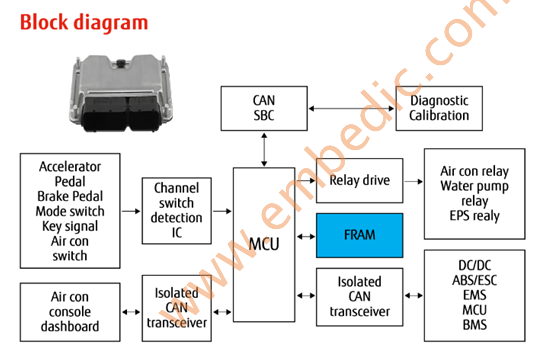
"The VCU system needs to record the current state of the car and the transmission gear, acceleration, braking and output torque at the time of failure at a speed of once per second, and FRAM can be stored and read through simpler software. , While ensuring high speed and high reliability." Feng Yixin introduced. In May of this year, Fujitsu launched the latest car-grade product MB85RS2MLY, which can reach 10M read/write times in the temperature range of -40°C to +125°C, which is very suitable for applications that require real-time data recording (such as continuous 10 years). Data is recorded every 0.1 seconds every day, the number of writes will exceed 3 billion), which can be described as having extremely high data write durability and reliability.
These characteristics are also crucial for BMS (Battery Management System), another core technology of new energy vehicles. BMS needs to record and store data in real time. Its system will record the important data (fault information, health status SOH and fuel gauge SOC, etc.) of the battery cell in real time and continuously at a frequency of every second or every 0.1 second, and monitor the short-term battery (The last few charging cycles 60 times/sec) and long-term (full battery life) battery performance. According to Feng Yixin: "For a simple example, the battery cell power is generally maintained between 30% and 75% to indicate normal operation. If there is an imbalance, it needs to be supplemented from another unit. At this time, the system needs to detect and record the battery. The unit's power, temperature, voltage, current, etc. data, and the time interval for a single monitoring record cannot be too long.
Therefore, by adopting FRAM, automakers can significantly reduce system complexity and improve data integrity. In fact, FRAM's presence has been spread all over, such as airbag data storage (Airbag), accident data recorder (EDR), new energy vehicle CAN box (CAN-BOX), new energy vehicle terminal (T-BOX), tire pressure monitoring (TPMS), automotive driving assistance system (ADAS), navigation and infotainment system (infotainment) and other key electronic systems of new energy vehicles.
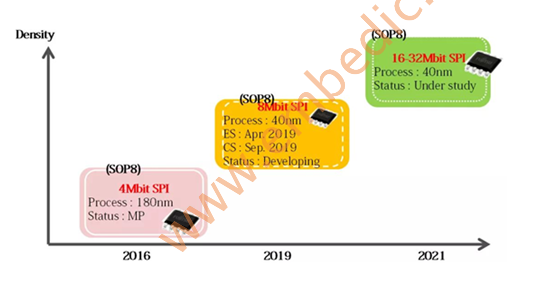
In March of this year, China requested to speed up the construction of new infrastructure such as 5G networks and data centers. Among the seven major areas of new infrastructure construction disclosed later, new energy charging piles were listed among them. According to the data of "CCID Consulting", as of December 2019, the number of charging piles in China reached 1.219 million units, with a vehicle-to-stack ratio of about 3.4:1, which is much lower than the "Guidelines for the Development of Electric Vehicle Charging Infrastructure (2015-2020)" The planned 1:1. It is conservatively estimated that in the next 10 years, the gap in the construction of charging piles in China will be as high as 63 million. Compared with gas stations, charging piles can carry more information, in addition to electricity, there are information flow, capital flow, and so on. As an important port for data collection of the Internet of Vehicles, the large-scale completion of the charging pile network will surely become an important information platform for the future social transportation system.
Therefore, the recording and storage of charging pile data is very important. As a supporting product for new energy vehicles, charging piles need to process a large number of parameters during operation. Through system monitoring data and event information, it can realize centralized remote monitoring of equipment, provide necessary data support for equipment fault diagnosis, and also provide power station Comprehensive management provides comprehensive statistical data and various statistical reports. To this end, all data must be collected, viewed and analyzed in a unified manner, and functions such as real-time monitoring of equipment operating status, hazard warnings and notifications, data query and analysis, total equipment operation and management are provided.
“Charging pile manufacturers need to choose suitable storage products to deal with, and their data storage application requirements are very similar to those of smart meters.” Feng Yixin pointed out, “At present, FRAM memory has been widely used in the smart meter industry as a standard memory. The three advantages of FRAM are unmatched by many of the same type of memory." Feng Yixin said that the three advantages of FRAM are high-speed writing, durability and low power consumption. Compared with EEPROM, FRAM has a lifetime of up to 10 trillion write times, while EEPROM has only one million times (10^6). Fujitsu FRAM can write data in 150ns, which is about 30,000 times faster than EEPROM. The power consumption of writing a byte of data is only 150nJ, which is about 1/400 of EEPROM, which has huge advantages in battery-powered applications.
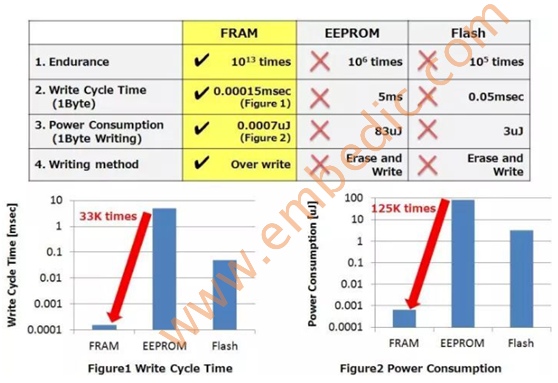
FRAM is not only capable of high-speed writing, but also high-speed erasing. Taking data security as an example, if hackers illegally steal and analyze the confidential data of the charging pile, it will lead to a wide range of information leakage. In this regard, low-power and high-speed FRAM can use small battery power to instantly erase important data, thereby ensuring user information security. At this time, FRAM only needs 0.1mA of working current to erase 256bit data in 0.3ms, which has significant advantages over EEPROM.
Although FRAM has more advantages than traditional Flash and EEPROM in terms of read and write durability, write speed and power consumption, it also has the disadvantages of higher cost and low capacity. To this end, Fujitsu has focused on launching two other storage products that can complement FRAM products in the market-ReRAM and Nano Random Access Memory NRAM to meet more differentiated needs.
ReRAM can completely replace large-capacity EEPROM. In August 2019, Fujitsu successfully developed the MB85AS8MT-the world's highest density 8Mbit ReRAM product. It uses an SPI interface and a non-volatile memory compatible with EEPROM. It can operate in a wide voltage range between 1.6 and 3.6 volts. Only 0.15mA is required to read data at 5MHz operating frequency. "At present, there are only two companies in the world that can mass produce ReRAM, and Fujitsu is one of them." Feng Yixin said, "The maximum EEPROM capacity is only 2Mb, and in some cases the power consumption is too high. Our mass-produced 4Mb and 8Mb products can meet EEPROM customers with these needs can guarantee that the price is close to EEPROM 2Mb."
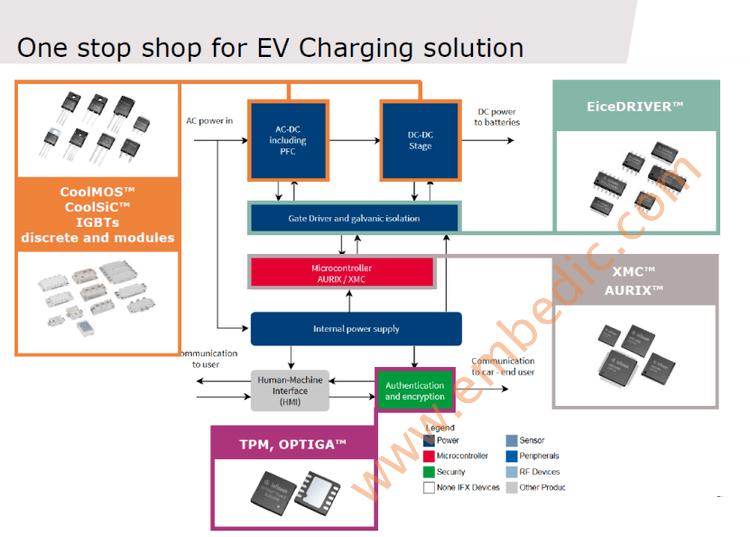
According to the plan, Fujitsu expects to bring 16Mbit or even 32Mbit ReRAM products around 2021, which will further meet the needs of enterprises and customers for various special applications.
NRAM combines the high-speed writing and high read-write durability of FRAM (1000 times higher than NOR Flash), and has the same large capacity and cost as NOR Flash, and achieves very low power consumption (the power consumption in standby mode is almost It is zero), and the reliability is very high. The data storage time limit is up to 1000 years at 80 degrees and 10 years at 300 degrees. When talking about the application of NRAM in vehicle storage, Feng Yixin pointed out: "Currently, FRAM-based automotive-grade ICs can withstand a high temperature range of 125 degrees, while NRAM can reach 150 degrees. Therefore, future NRAM-based ICs are expected to appear in In automobile engines." As the first generation of NRAM products, Fujitsu's 16Mbit DDR3 SPI interface products will be available at the earliest by the end of 2020.
It can be seen that by creating a complete array of FRAM, ReRAM, and NRAM three-line products, Fujitsu can completely replace the traditional storage products EEPROM and NOR FLASH, which will inevitably trigger a new round of reshuffle in the storage industry.
conclusion
It is foreseeable that the demand for the automotive semiconductor market will increase greatly in the future. In particular, 2020 is destined to be a key year for the domestic new energy automotive related electronic product market and technological changes. According to Feng Yixin, the future development of auto-driving cars is destined to become wider and wider, and the requirements for data processing and storage will reach a very high level. In the field of Internet of Vehicles storage, Fujitsu will launch more product lines so that related products supported by the three major technologies can cope with the increasingly rich automotive grades and application scenarios, and provide customers with more choices.
Manufacturer: Texas Instruments
IC DIGITAL MEDIA SOC 529FCBGA
Product Categories: SOC
Lifecycle:
RoHS:
Manufacturer: Microchip
IC MCU 8BIT 28KB FLASH 64TQFP
Product Categories: 8bit MCU
Lifecycle:
RoHS:
Manufacturer: Texas Instruments
IC DIGITAL MEDIA SOC 529FCBGA
Product Categories: SOC
Lifecycle:
RoHS:
Manufacturer: Texas Instruments
IC DGTL MEDIA PROC 529FCBGA
Product Categories: DSP
Lifecycle:
RoHS:
Looking forward to your comment
Comment